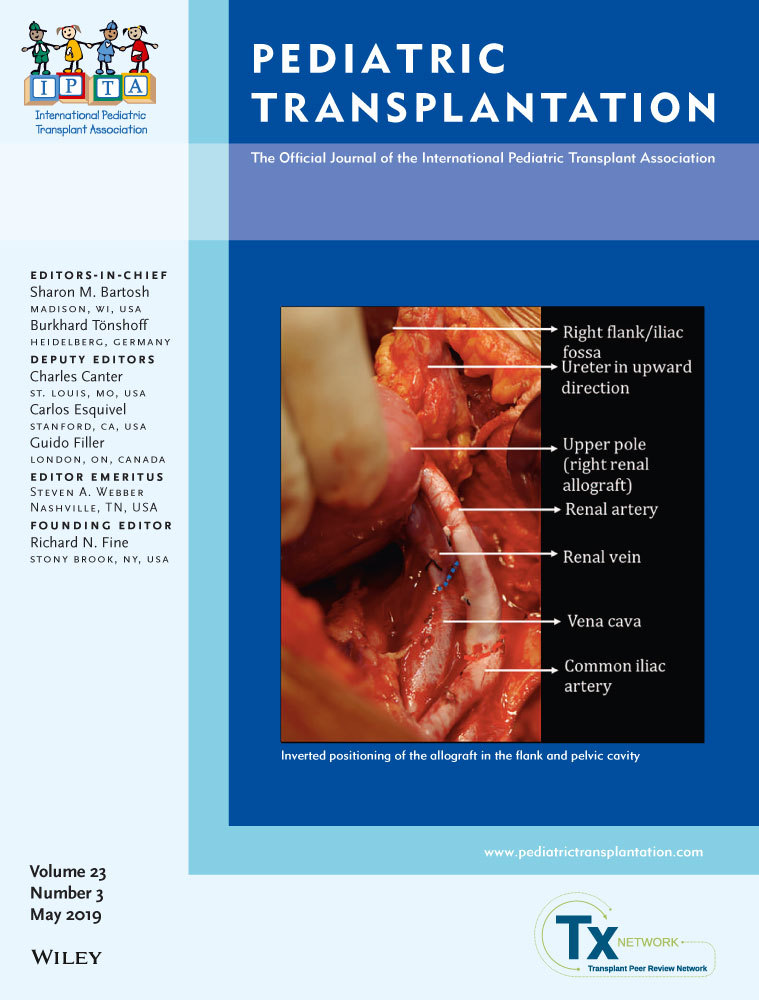Perceived barriers to medication adherence remain stable following solid organ transplantation
Abstract
Perceived barriers to adherence have previously been investigated in SOT to identify plausible intervention targets to improve adherence and transplant outcomes. Fifteen centers in CTOTC enrolled patients longitudinally. Patients >8 years completed Adolescent Scale(AMBS) at two visits at least 6 months apart in the first 17 months post-transplant while their guardians completed PMBS. Differences over time for pre-identified AMBS/PMBS factors were analyzed. Perceived barrier reporting impact on subsequent TAC levels was assessed. A total of 123 patients or their guardians completed PMBS or AMBS. Twenty-six were 6-11 years and 97 were ≥12. The final cohort consisted of kidney (66%), lung (19%), liver (8%), and heart (7%) recipients. Unadjusted analysis showed no statistically significant change in reported barriers from visit 1 (median 2.6 months, range 1.2-3.7 post-transplant) to visit 2 (median 12, range 8.9-16.5). Of 102 patients with TAC levels, 74 had a single level reported at both visits. The factor of “Disease frustration” was identified through the PMBS/AMBS questions about fatigue around medication and disease. Each point increase in “disease frustration” at visit 1 on the AMBS/PMBS doubled the odds of a lower-than-threshold TAC level at visit 2. No clear change in overall level of perceived barriers to medication adherence in the first year post-transplant was seen in pediatric SOT. However, disease frustration early post-transplant was associated with a single subtherapeutic TAC levels at 12 months. A brief screening measure may allow for early self-identification of risk.




